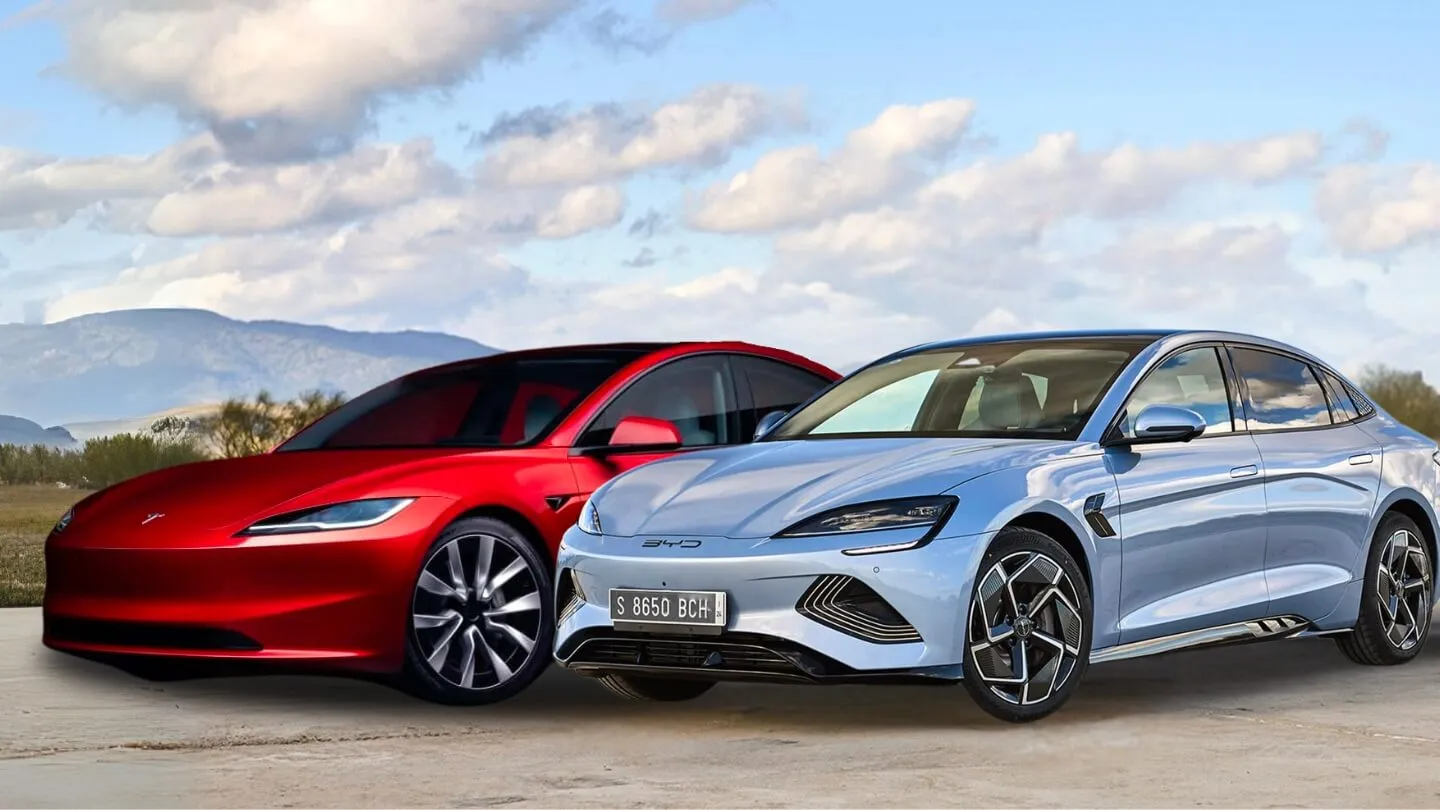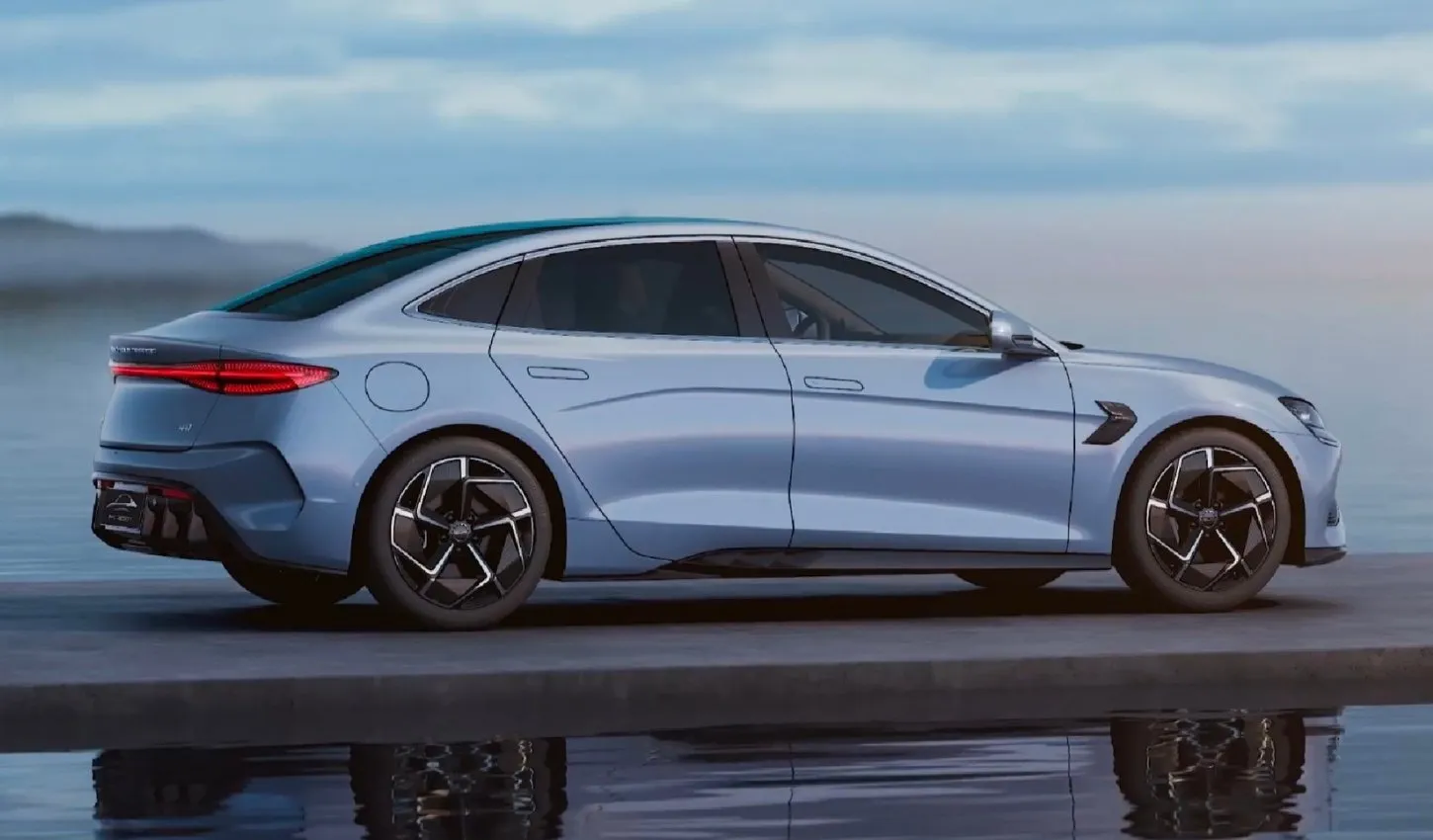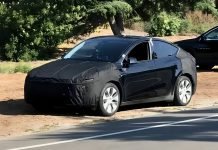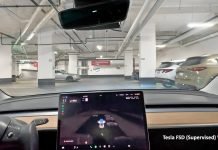Over the course of more than 28 years of rapid expansion, BYD has created more than 30 industrial hubs on six different continents and has become a major player in various sectors, including electronics, automotive, renewable energy, and rail transportation. Specializing in energy generation, storage, and utilization, BYD provides complete solutions for clean and emission-free energy.
Let’s talk about the BYD Seal electric car. The Seal is a sleek electric sedan designed to be really good at cutting through the air, which helps it go a long way on a single charge. It’s a bit longer than the Model 3 and has a longer space between its wheels.
What’s interesting is that it uses a special type of battery setup called ‘cell-to-body.’ Instead of having a traditional metal platform above the battery, the battery is essentially part of the car’s structure. So, the floor you put your feet on is actually the top of the battery pack.
The front of the BYD Seal has an X-shaped design, making it look sporty and stylish. It’s even won a prestigious award for its great design, the iF Design Award. So, the BYD Seal is not only energy-efficient but also a real beauty in terms of design.

Table of Contents
BYD EVs in the USA
Last year, BYD, sold more than 1.85 million plug-in electric cars. Over 900,000 of them were completely electric, which is a big increase from the previous year. BYD is now making more new car models and selling them in many new countries around the world, including some in Europe.
But when it comes to selling their cars in the United States, BYD is being very careful. This is partly because the relationship between the United States and China is not very friendly right now. Also, a new law called the Inflation Reduction Act (IRA) changed the rules for a $7,500 tax credit that used to help people buy BYD electric cars. Now, this tax credit doesn’t apply to BYD cars that are imported from other countries.
For BYD, this means they would have to make a big commitment to sell cars in the US. They would need to not only sell a lot of cars but also build them in the United States, which is a difficult decision to make, especially during these tough times.
Other Chinese car companies are also choosing to sell their cars in Europe instead of the US. This includes companies that make electric cars and batteries, like CATL. So, it’s clear that everyone is being very cautious.
Still, BYD is expected to keep growing, and they might sell 3 million cars a year soon. They even have plans to sell 10 million cars a year by the early 2030s. It’s likely that big car companies will eventually decide to sell their cars in the United States too.
BYD Seal: An In-depth Look
Customers will have a choice between two versions of the BYD Seal electric car.
Powertrain Options
The first one, called Seal Design, features a single rear-mounted motor with 308 horsepower, allowing it to accelerate from 0 to 62 miles per hour in just under six seconds. Its 82.5kWh battery provides an impressive range of 354 miles.
The second variant, known as Seal Excellence-AWD, lives up to its name by adding a front motor for four-wheel drive and torque vectoring, giving it a powerful 523 horsepower and a rapid 0-62mph time of 3.8 seconds. Although it shares the same battery capacity, the extra power reduces its range to 323 miles.
Both versions come with a standard heat pump to maintain the range in cooler weather and offer 150KW DC charging, capable of replenishing the battery from 30% to 80% in just 26 minutes.

Interior and Tech Features
BYD doesn’t skimp on features, even for the Design versions. All models come equipped with a 10.25-inch digital instrument panel, a large 15.6-inch infotainment screen that can switch between landscape and portrait orientations, a high-quality 12-speaker Dynaudio sound system, heated and ventilated front seats, rear privacy glass, a panoramic glass roof, and the ability to power external devices (vehicle to load) at up to 3kW.
The BYD Seal is quick and easily reaches highway speeds. It effectively minimizes road and wind noise, offering a comfortable and refined driving experience. The suspension setup (double wishbones at the front and multi-link at the rear) strikes a good balance between handling and comfort. The steering is precise, allowing you to make the most of the rear motor’s power on fast roads. There’s a range of driving modes, including Eco for maximizing range and Snow for low-traction conditions, but Normal mode is often the best choice.
Balancing Act: Import Duties, Tariffs, and Pricing
In a recent development, the rear-wheel-drive version of the BYD Seal Standard, now available in China, starts at approximately $27,500 (equivalent to 189,800 yuan). This represents a noteworthy price reduction of almost 11% compared to a prior iteration offering the same CLTC driving range of 342 miles.
What’s even more significant is that this particular model is priced 18% lower than the Tesla Model 3 RWD, which offers a similar range of 345 miles.
Furthermore, three other trim levels of the BYD Seal, namely Luxury, Performance, and Performance AWD, have also witnessed substantial price reductions of 9.8%, 8.7%, and 3.3%, respectively. The Seal sedan, part of BYD’s Ocean vehicle series, made its debut in July 2022 and was enjoying robust monthly sales of over 10,000 units by the end of the year. However, following Tesla’s price cuts for the Model 3 in January 2023, monthly sales of the BYD Seal dipped to the range of 6,000-7,000 units.
According to data from the China Passenger Car Association, BYD sold 19,573 Seal cars in the first quarter of 2023, in contrast to Tesla’s impressive 42,782 sales of the Model 3 during the same period. In light of these new price adjustments, BYD is aiming to invigorate sales of its electric luxury sedan.
The potential cost of the BYD Seal in the United States is influenced by various factors, with import duties and tariffs being significant considerations. One of the most critical factors impacting the cost of the BYD Seal in the U.S. is import duties and tariffs. These charges are imposed by the U.S. government on imported goods and can substantially increase the price of foreign-made vehicles.
The exact amount of these duties and tariffs can vary based on trade policies and agreements in place at the time of import. It’s essential to monitor any changes in trade relations between the U.S. and China, as they can directly affect the cost of BYD’s vehicles.
BYD Seal vs. Tesla Model 3
The Tesla Model 3 stands as Tesla’s most affordable and widely embraced vehicle, representing a significant triumph for the company since its initial production in 2017. This compact electric car has become a cornerstone of the brand’s success. Offering an impressive range of over 300 miles, the Model 3 is an ideal choice for urban commuters and can seamlessly adapt to extended journeys, courtesy of Tesla’s extensive network of high-speed charging stations spanning the nation.
Key Features of BYD Seal
- Two motor options, rear-wheel drive and all-wheel drive.
- 82.5kWh battery with a range of around 342-354 miles (550-570 kilometers).
- 150KW DC fast charging capability.
- A variety of trim levels with features like a large infotainment screen, premium sound system, and panoramic glass roof.
- Available in some global markets, including China and potentially other countries.
Key Features of Tesla Model 3
- Multiple versions with varying performance and range, including Standard Range, Long Range, and Performance.
- Longest range option offers over 360 miles.
- Supercharger network for fast charging.
- Advanced driver-assistance features (Autopilot) and over-the-air software updates.
- Extensive infotainment system with a large touchscreen display.
- Widely available in the United States and various global markets.
Pricing
Tesla Model 3 pricing varies based on the version and any additional features. The Standard Range was positioned as a more affordable option compared to the Long Range and Performance models.
It’s important to note that both the BYD Seal and Tesla Model 3 are electric vehicles, but Tesla has a more established presence and extensive charging infrastructure, particularly in the United States. Tesla’s vehicles also benefit from a strong reputation for performance and advanced technology features, including semi-autonomous driving capabilities. The BYD Seal is relatively newer in the global market.
As an automaker, BYD has historically positioned its vehicles as more affordable options, making EVs accessible to a wider range of consumers. If BYD can maintain competitive pricing for the Seal while offering impressive features, it can attract budget-conscious buyers.
The BYD Seal boasts a respectable range. A competitive range is crucial in addressing range anxiety, a common concern among potential EV buyers. BYD’s presence in multiple global markets, including China, positions it to expand its reach and potentially compete with established players like Tesla. Entering new markets, including Europe and North America, would be a key step in this regard.
If BYD invests in building a robust charging infrastructure or forms partnerships with charging network providers, it can help alleviate concerns about charging accessibility, a factor that influences EV purchase decisions.
As BYD gains more experience in the EV market, it can focus on improving the quality and reliability of its vehicles, which are critical factors in gaining consumer trust and loyalty. In some regions, there may be government incentives and policies to encourage the adoption of electric vehicles. BYD could leverage these policies to make its EVs even more attractive to potential buyers. The global shift towards sustainability and reduced emissions creates an opportunity for BYD, given its focus on electric mobility.
As consumers become more environmentally conscious, an electric vehicle like the Seal could appeal to those seeking to reduce their carbon footprint. Expanding the Seal’s lineup to include different trims and variations can help BYD cater to a broader audience and meet diverse consumer needs.
The BYD Seal’s Winning Formula
- Competitive Pricing: The BYD Seal is positioned as a more affordable electric vehicle compared to some competitors, including the Tesla Model 3. This attractive pricing makes it a compelling choice for cost-conscious consumers looking to transition to electric vehicles.
- Sizable Range: The BYD Seal offers a substantial electric range, making it suitable for a wide range of driving needs. Its impressive range, typically exceeding 300 miles, addresses concerns about range anxiety and allows for convenient long-distance travel.
- Efficient Charging: With its 150KW DC charging capability, the BYD Seal can replenish the battery quickly. Fast-charging infrastructure is crucial for EV owners, and BYD’s commitment to this aspect enhances its appeal.
- Advanced Heat Pump: The inclusion of a heat pump as a standard feature in the BYD Seal helps to preserve real-world range, particularly in cooler conditions. This is a practical advantage, as extreme temperatures can affect an EV’s efficiency.
- Safety Features: Safety technology is incorporated into the BYD Seal to provide a secure driving experience. This includes features like adaptive cruise control, lane-keeping assist, and automatic emergency braking.
- Infotainment and Technology: The BYD Seal features a sizeable infotainment system, providing a range of connectivity options, including navigation and smartphone integration. These tech features are essential for a modern driving experience.
BYD’s Commitment to Sustainability
BYD Seal produces zero tailpipe emissions, contributing to a cleaner environment and reduced carbon footprint. This aligns with the growing demand for environmentally friendly transportation. BYD has a strong commitment to sustainability. This includes efforts to reduce energy consumption in manufacturing, employing renewable energy sources, and minimizing waste generation.
BYD’s global expansion efforts allow it to promote sustainability and cleaner transportation solutions in various countries, contributing to the reduction of greenhouse gas emissions on a global scale.
Conclusion
BYD has solidified its presence as a leading innovator across diverse sectors, ranging from electronics to automotive and renewable energy. The company’s unwavering commitment to clean and emission-free energy solutions is evident through its array of products designed to harness and utilize energy in an environmentally conscious manner.
Among BYD’s impressive offerings, the BYD Seal electric car shines as a remarkable fusion of cutting-edge technology and captivating design. Its groundbreaking ‘cell-to-body’ battery setup, where the battery pack becomes an integral part of the car’s structure, is a testament to innovation. Paired with the Seal’s sporty aesthetics, this design has earned prestigious accolades, highlighting its efficiency and style.
BYD’s global expansion is rapidly gaining momentum, marked by substantial sales figures in the electric car market. While cautious about entering the challenging U.S. market, BYD’s growth is undeniable on a global scale as it diversifies its portfolio and introduces new models across various countries.
While competing with established electric vehicles like the Tesla Model 3, the BYD Seal’s affordability, impressive range, and unwavering focus on sustainability make it a compelling choice for eco-conscious individuals looking to embrace electric mobility without breaking the bank.
As we journey further into the realm of electrified transportation, BYD’s vision and innovation, embodied by the Seal, could well shape the future of sustainable mobility. This contribution is poised to promote cleaner air, a reduced carbon footprint, and increased accessibility to electric vehicles. The choice between the BYD Seal and its competitors may ultimately come down to individual preferences, but one thing remains clear: the electric car revolution has never been more thrilling, and BYD stands at its vanguard.


















